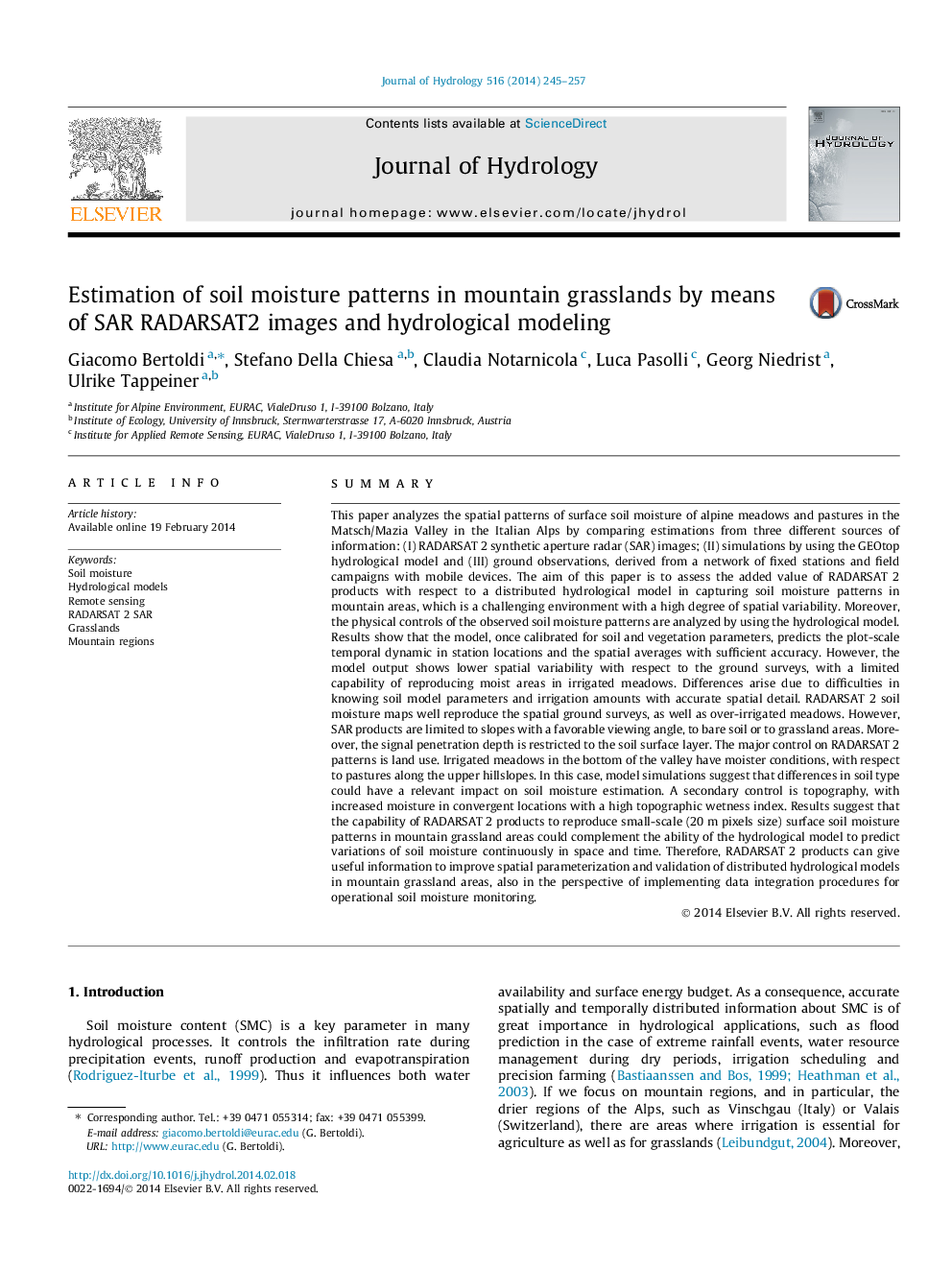| کد مقاله | کد نشریه | سال انتشار | مقاله انگلیسی | نسخه تمام متن |
|---|---|---|---|---|
| 6412684 | 1629932 | 2014 | 13 صفحه PDF | دانلود رایگان |

- The surface soil moisture content (SMC) dynamic of mountain grasslands is analyzed.
- RADARSAT SAR, hydrological model outputs and ground observations are compared.
- We evaluate RADARSAT with respect to a hydrological model in estimating SMC.
- RADARSAT has a good ability to reproduce SMC patterns for alpine grasslands.
- The main physical controls on SMC patterns are soil, land cover and topography.
SummaryThis paper analyzes the spatial patterns of surface soil moisture of alpine meadows and pastures in the Matsch/Mazia Valley in the Italian Alps by comparing estimations from three different sources of information: (I) RADARSAT 2 synthetic aperture radar (SAR) images; (II) simulations by using the GEOtop hydrological model and (III) ground observations, derived from a network of fixed stations and field campaigns with mobile devices. The aim of this paper is to assess the added value of RADARSAT 2 products with respect to a distributed hydrological model in capturing soil moisture patterns in mountain areas, which is a challenging environment with a high degree of spatial variability. Moreover, the physical controls of the observed soil moisture patterns are analyzed by using the hydrological model. Results show that the model, once calibrated for soil and vegetation parameters, predicts the plot-scale temporal dynamic in station locations and the spatial averages with sufficient accuracy. However, the model output shows lower spatial variability with respect to the ground surveys, with a limited capability of reproducing moist areas in irrigated meadows. Differences arise due to difficulties in knowing soil model parameters and irrigation amounts with accurate spatial detail. RADARSAT 2 soil moisture maps well reproduce the spatial ground surveys, as well as over-irrigated meadows. However, SAR products are limited to slopes with a favorable viewing angle, to bare soil or to grassland areas. Moreover, the signal penetration depth is restricted to the soil surface layer. The major control on RADARSAT 2 patterns is land use. Irrigated meadows in the bottom of the valley have moister conditions, with respect to pastures along the upper hillslopes. In this case, model simulations suggest that differences in soil type could have a relevant impact on soil moisture estimation. A secondary control is topography, with increased moisture in convergent locations with a high topographic wetness index. Results suggest that the capability of RADARSAT 2 products to reproduce small-scale (20Â m pixels size) surface soil moisture patterns in mountain grassland areas could complement the ability of the hydrological model to predict variations of soil moisture continuously in space and time. Therefore, RADARSAT 2 products can give useful information to improve spatial parameterization and validation of distributed hydrological models in mountain grassland areas, also in the perspective of implementing data integration procedures for operational soil moisture monitoring.
Journal: Journal of Hydrology - Volume 516, 4 August 2014, Pages 245-257